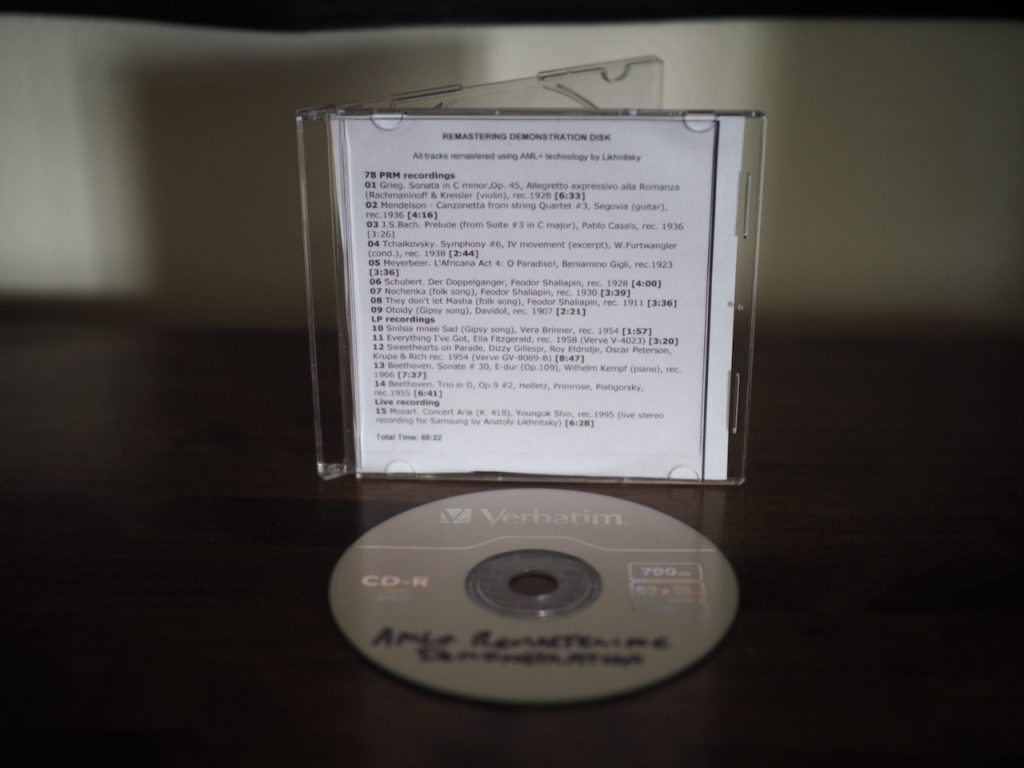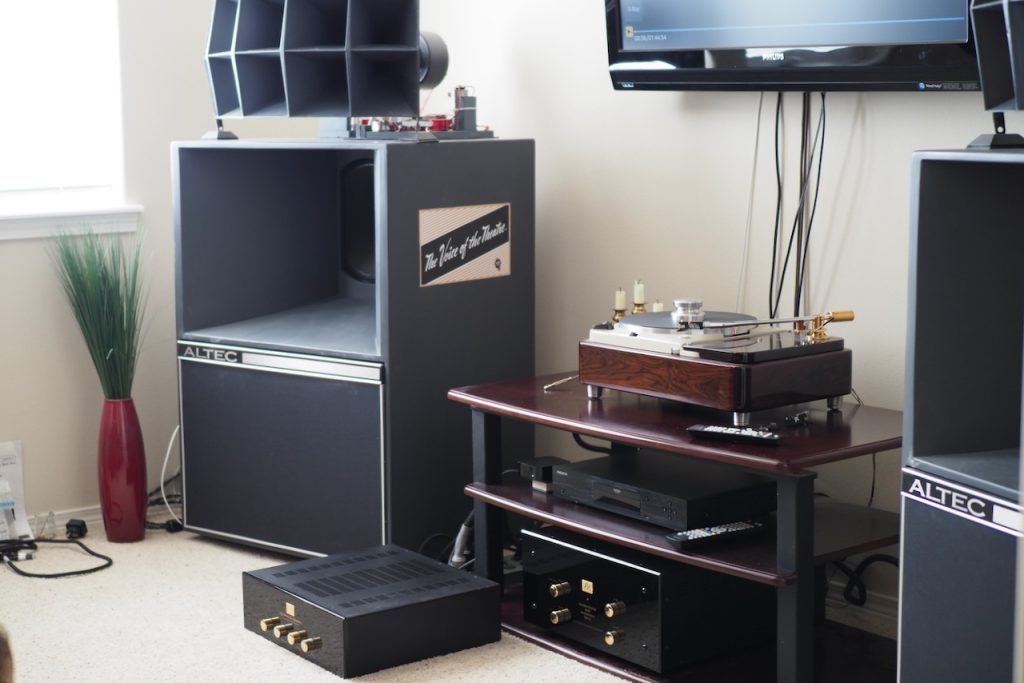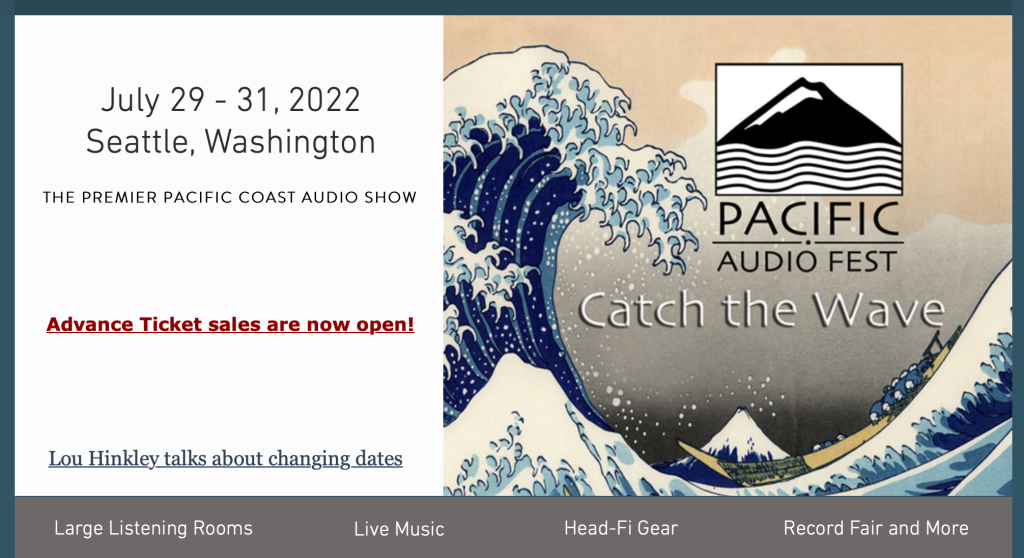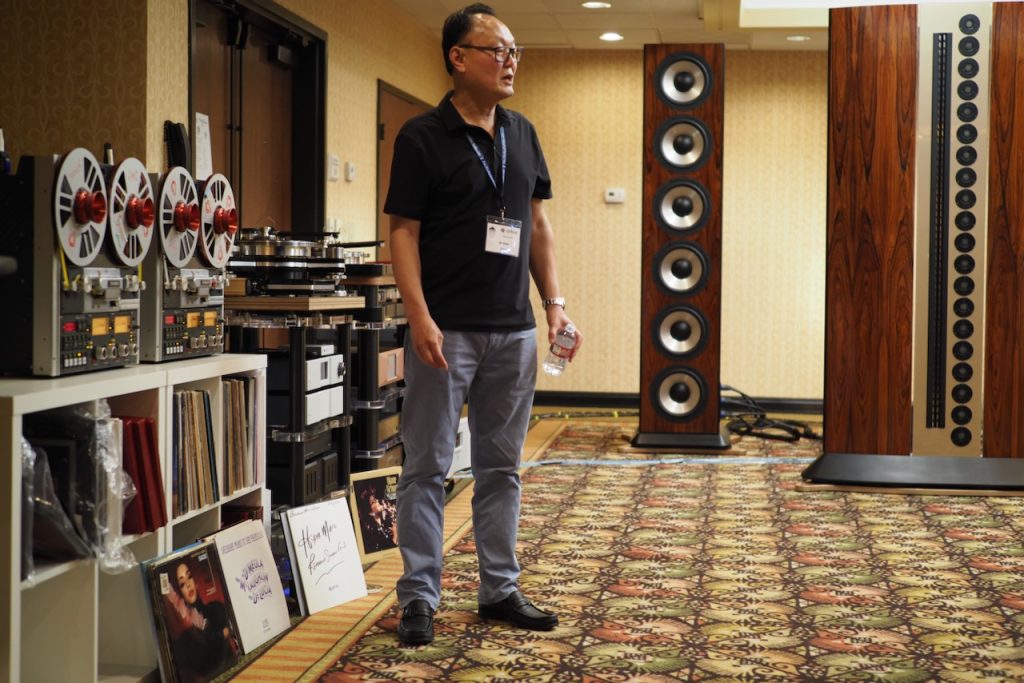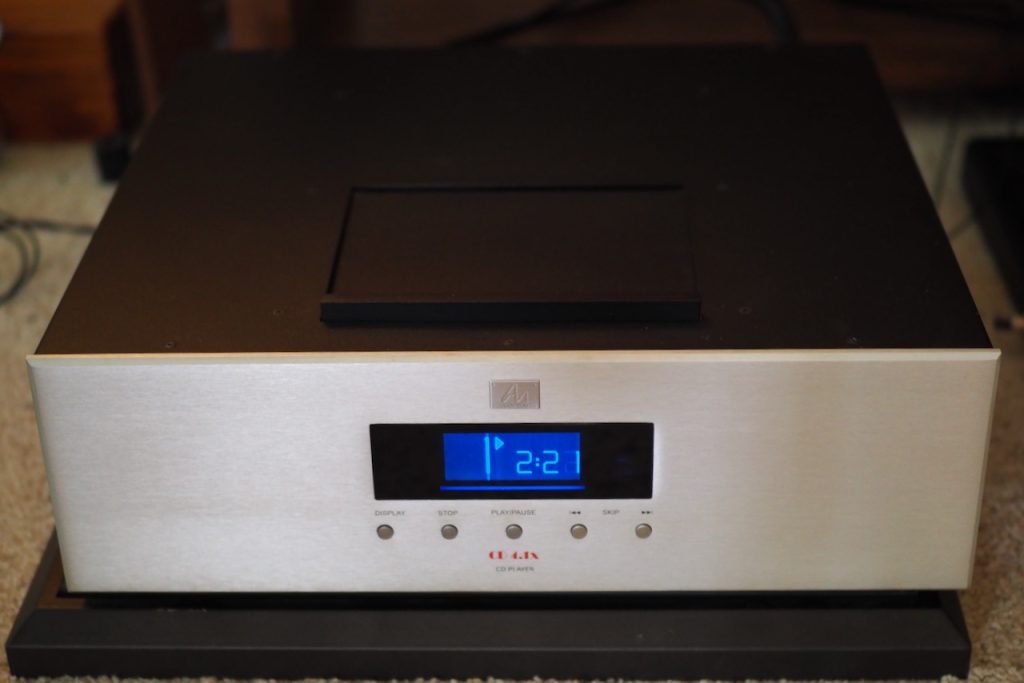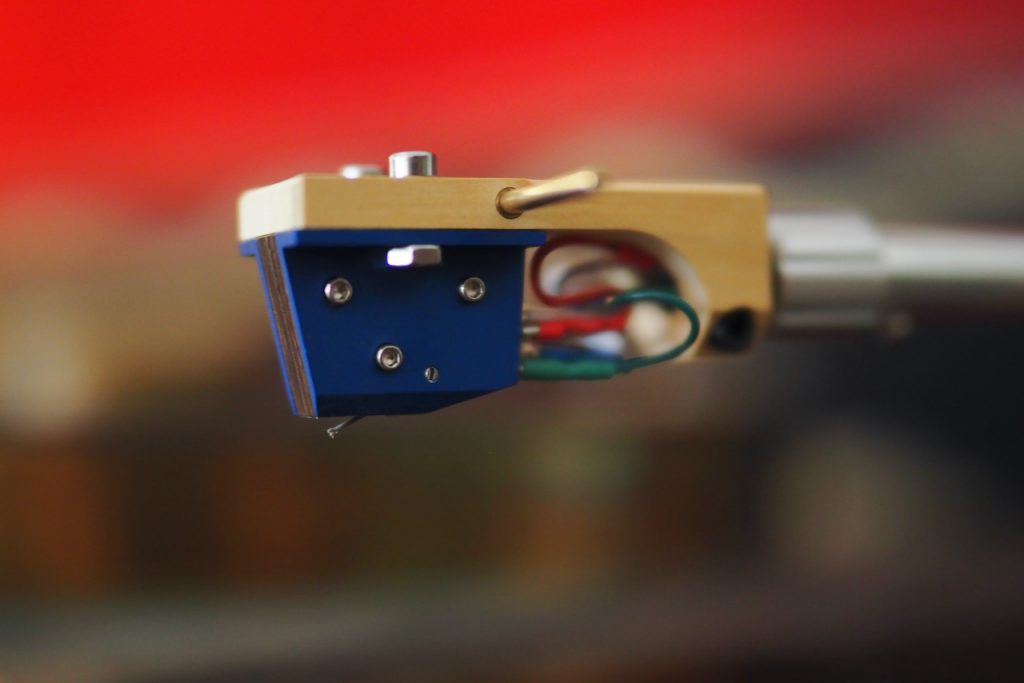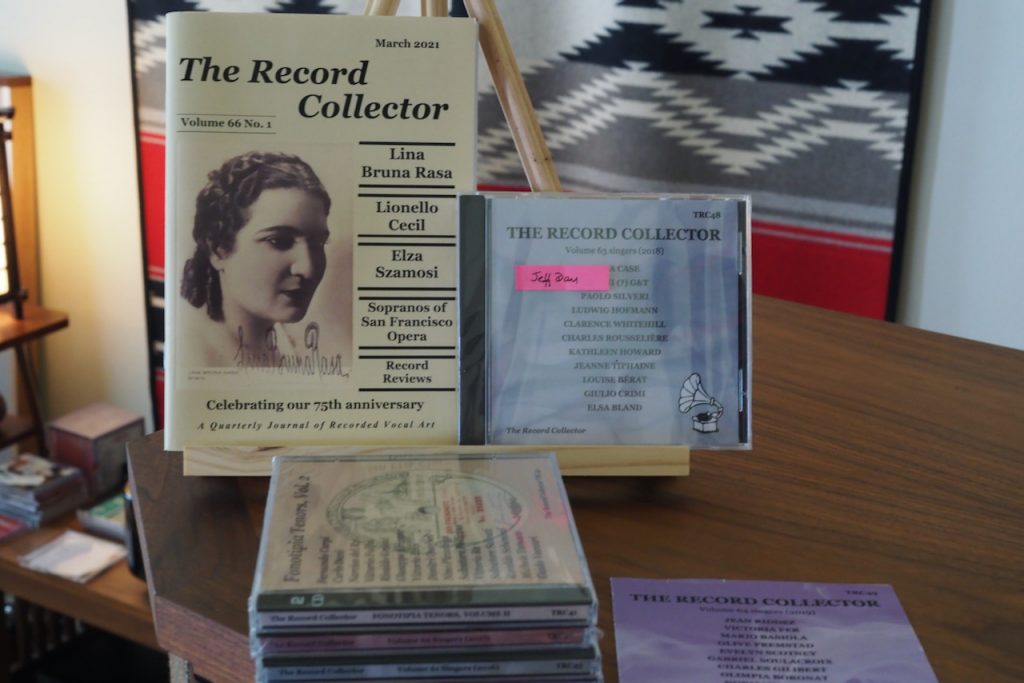With the publication of the Positive Feedback review of the Audio Note (UK) AN-K/SP3 loudspeakers (HERE), I've finished up my survey of the Audio Note (UK) Level Two and Level Three components that I have here at Jeff's Place, and they will be (mostly) winging their way back home in the not too distant future.
I'm really going to miss these Audio Note (UK) components. They are fantastic to listen to music with, of course, but more than that, they've helped me grow as a listener and audio writer.
As a listener, the Audio Note (UK) components have ushered in a new era of exploring music for me.
Like many listeners who are also audio enthusiasts, my listening journey started with the music I grew up with and loved, which was then supplemented by music recommended for its high-fidelity sonic virtues by various writers in the hi-fi press.
Then late in my audio experience, Peter Qvortrup sent me some obscure 78 album transfers to digital, by Peter's late friend, Anatoly Markovich Likhnitsky.
Listening to Anatoly's 78 transfers were a pivotal moment for me, as I listened to them I realized the riches contained within the vast recorded music canon of Planet Earth, hardly any of which I'd explored in any depth, as my listening consisted largely of music recorded during the stereo period of the magnetic era of recording (1957 to 1975).
As I started to familiarize myself more with music from the different recording eras in our recorded music canon, I realized how many musical treasures I had missed by not listening to music recorded during the earlier acoustic (1877 to 1925) and electric (1925 to 1945) eras of the recording arts, as well as the early monaural period (1945 to 1957) of the magnetic era of recording (1945 to 1975).
Familiarizing myself with the history of the recording arts, and the musicians performances documented in those eras of the recording arts, has been particularly illuminating, and helped give me insights into what is a great recording, and what makes it great.
Generally speaking, early recordings are lower fidelity in terms of bandwidth, noise, resolution, etc., than are later recordings. As one progresses through the eras of the recording arts, the acoustic (1877 to 1925), electric (1925 to 1945), magnetic (1945 to 1975), and digital (1975 to today) eras, the technical parameters of recorded music have generally improved.
However, I have found that it is not the overall fidelity of a recording, low to high, that makes it great, but rather the artistic quality of the musical performances that have been documented in each of those unique recordings, from the different eras of the recording arts.
An analogy that occurs to me regarding the recording arts, is that the recordings of the great musicians from each era are unique and desirable in their own right as individual works of art, much like the photographs of the great photographers of history, like those of Joseph Nicéphore Niépce (1735 to 1833), Alfred Stieglitz (1864 to 1946), Margaret Bourke-White (1904 to 1971), Henri Cartier-Bresson (1908 to 2004), Robert Capa (1913 to 1954), Ansel Adams (1902 to 1984), and of course, many more.
My experience is that photographers are more in touch with the great photographers' photographs over the history of photography, than are audiophiles with the great recordings of great musicians over that same history, and as a result, we tend to undervalue the breadth of musical riches available to us in our recorded music canon.
Photographs from history are thought of in terms of their artistry more than in terms of their fidelity, irrespective of when they fall within the history of the photographic arts.
While the fidelity of photography has improved over the history of photography, what is most important in photography is what is being documented and how it makes the viewer feel when beholding its artistry.
Why the difference between photographers and audiophiles in perceiving the greatness of early works?
With photography, the camera, photographic media, and photographer have the same role as the recording equipment, the recording media, and recording engineers within the recording arts.
In photography you get photographs to admire as the artistic output, and within the recording arts you get the albums of music as the artistic output.
With photography our eyes and emotions are the window through which we view and appreciate the artistry of the great photographs of history.
In audio our ears and emotions are the window through which we hear the artistry of the great recordings of history ... but ... there is another gate that listeners must go through to appreciate the artistry of the great recordings in history, the audio playback equipment.
Audio playback equipment has a major role in a listener's ability to enjoy the recordings of the great musical performances documented in our recorded music canon.
The challenge for listeners is that not all audio systems are created equal in their ability to present each individual album of the recording arts, from any era of the recording arts, in the fidelity of that era, in all their grandeur, which can limit ones enjoyment of the great recorded musical performances.
Whether the photographic media for artistic expression was heliography as used by Niépce, or the platinum prints of Stieglitz, or the prints from black and white Kodak Tri-X ISO 400 film by Cartier-Bresson, or the large format glass plate negatives used by Ansel Adams, the artistic and emotional impact of their artistic works came through decisively.
That extra step required in audio, the audio playback system, makes for a great challenge to listeners who want to be able to enjoy and listen to all the great recorded performances of music in our history.
The best audio equipment can present recorded performances from any era, of any fidelity, as an artistic expression of the best and most enjoyable versions of themselves.
Caruso from the acoustic era. Billie Holiday from the electric era. Bing Crosby from the monaural period of the magnetic era. Bill Evans from the stereo period of the magnetic era. The Cowboy Junkies from the digital era. And many more.
That's a concept that I realized during my survey of the Audio Note (UK) equipment from Peter Qvortrup, whose designs do all of that very well indeed.
I think that is the biggest challenge for audio engineers today, being able to develop designs that can make enjoyably accessible the full artistic experience available from virtually any album, from any era of the recording arts, of any fidelity.
The good news is that there is more audio equipment being made available today that can do that. The best audio equipment is getting better at being able to play back any album, from any recording era, and deliver the full artistic impact from that album, with all its inherent life, emotion, and fidelity intact.
Ok, back to my Audio Note (UK) AN-K/SPe loudspeakers follow-up.
One of the things I've been wanting to do is try the Meishu 300B integrated amp (review HERE) with the AN-K/SPe loudspeakers.
The Meishu really impressed in my Altec A5 Voice of the Theatre loudspeakers based audio-visual system, bettering any amplifier in my experience at presenting an involving portrayal of what I was watching and listening to.
The Meishu was simply stunning, projecting aural images far out in front of the plane of the loudspeakers into my room, into the same space that I as a listener was sitting in, while at the same time always delivering a hefty dose of the life and emotion inherent in the films and music.
Films from early in the black and white monaural period, recorded on vintage Western Electric equipment, with all the fidelity limitations of that period, were as glorious as viewing-listening experiences as the latest modern blockbusters were. I was hooked with the Meishu's charms!
My A5s crossovers are optimized for room boundary placement in my audio-visual room, and the performance was truly impressive in that context, which made me wonder how the Meishu's performance would be with the AN-K/SPe loudspeakers, that are also optimized for room boundary positioning.
I suppose it shouldn't be too surprising, but given that my A5s and the AN-K/SPes are both optimized for room boundary positioning, I found that the Meishu had that same sort of glorious presentation with the AN-K/SPes as it did with my A5s.
The natural sounding resolution and clarity of the Meishu were immediately apparent, as were the excellent dynamics and excitingly vivid aural images, but most important to me was that ability of the Meishu to make each album I listened to from the different eras of the recording arts, sound and feel like I was hearing the best version of itself in terms of emotional impact and musicality.
Well, the mighty Meishu did not disappoint! What a great match for the AN-K/SPe loudspeakers.
I've been a longtime devotee of classic turntables and vinyl for listening. I suppose from a high-performance perspective, reel to reel (R2R) machines playing back master tapes are the top-dog for high-performance sources. Turntables & vinyl are next in my performance hierarchy. Then digital.
But wait, is that right?
At the Pacific Audio Fest I heard a very compelling presentation comparing fine R2R machines playing back master tapes, to playing back the same thing on fine turntables & vinyl, to playing back digital files that were transfers from master tapes on excellent digital kit.
The gentleman who was doing the presentation mentioned that he couldn't hear the difference in fidelity from the original analog master tapes and the high-quality digital transfers of them. Gasp!
He did mention that it troubled him a little when he was hearing digital transfers instead of the analog master tapes, as he didn't think that they should sound as good, but they did.
Either the gentleman couldn't hear the difference, or more likely, there wasn't enough of a difference to hear. Digital has come of age.
The moral of the story is that digital transfers have gotten so good it's basically a non-issue from a fidelity standpoint, and which brings me to another important point to ponder.
You've no doubt gleaned from what I've written already, that the proliferation of early recordings being available on digital media, typically Red Book CDs, has truly advanced my ability to enjoy music from any era.
Those digital transfers of important musical performances from all the eras of the recording arts being available on CD is huge for music lovers!
Now if I have a good CD player, I can listen to nearly any album ever recorded in the history of the recording arts, and be the beneficiary of a fine listening experience.
Because of that, sometime over the last few years, a CD player has become perhaps, my most important source for listening to all kinds of new music.
On the very best recordings of the stereo magnetic era, I've found that a good turntable - like my CTC Garrard 301 fitted with an Audio Note (UK) Io I MC cartridge - playing vinyl, provides a bit more performance than a CD player, but not by as much as you might think when compared to a really good CD player, like the Audio Note (UK) 4.1x CD player, for example.
As I mentioned earlier, I have found that it is not the overall fidelity of a recording, low to high, that makes it great, but rather the artistic quality of the musical performances that have been documented in each of those unique recordings, from the different eras of the recording arts.
What I love about the Audio Note (UK) 4.1x CD player (and other Audio Note (UK) products), is that it (they) unfailingly convey the life, emotion, and artistry, from any recorded musical performances from any recording era.
It's a real treat, and very satisfying to be able to listen to a Red Book CD, and get the full emotional impact of a recording in the highest fidelity possible for a given era of recording. It turned out to be a game changer for me in exploring and enjoying music.
Most of the music I've been listening to of late will never be available on vinyl, or on high-res digital mediums. But it is available on Red Book CD, which has added immensely to my listening enjoyment.
Many thanks to Peter Qvortrup for allowing me to write about his Audio Note (UK) components here at Jeff's Place and Positive Feedback.
In particular, I want to thank Peter for sharing his 78 transfers with me, and allowing me to hear how great they can sound over his Red Book CD players - it opened up a whole new world of music listening for me.
It's been an illuminating journey for sure, and has taken my music listening to the next level of enjoyment.
The tricky part now is figuring out how to fully articulate those new listening revelations in my writing, but I'll be working on that.
As always, thanks for stopping by, and may the tone be with you!






